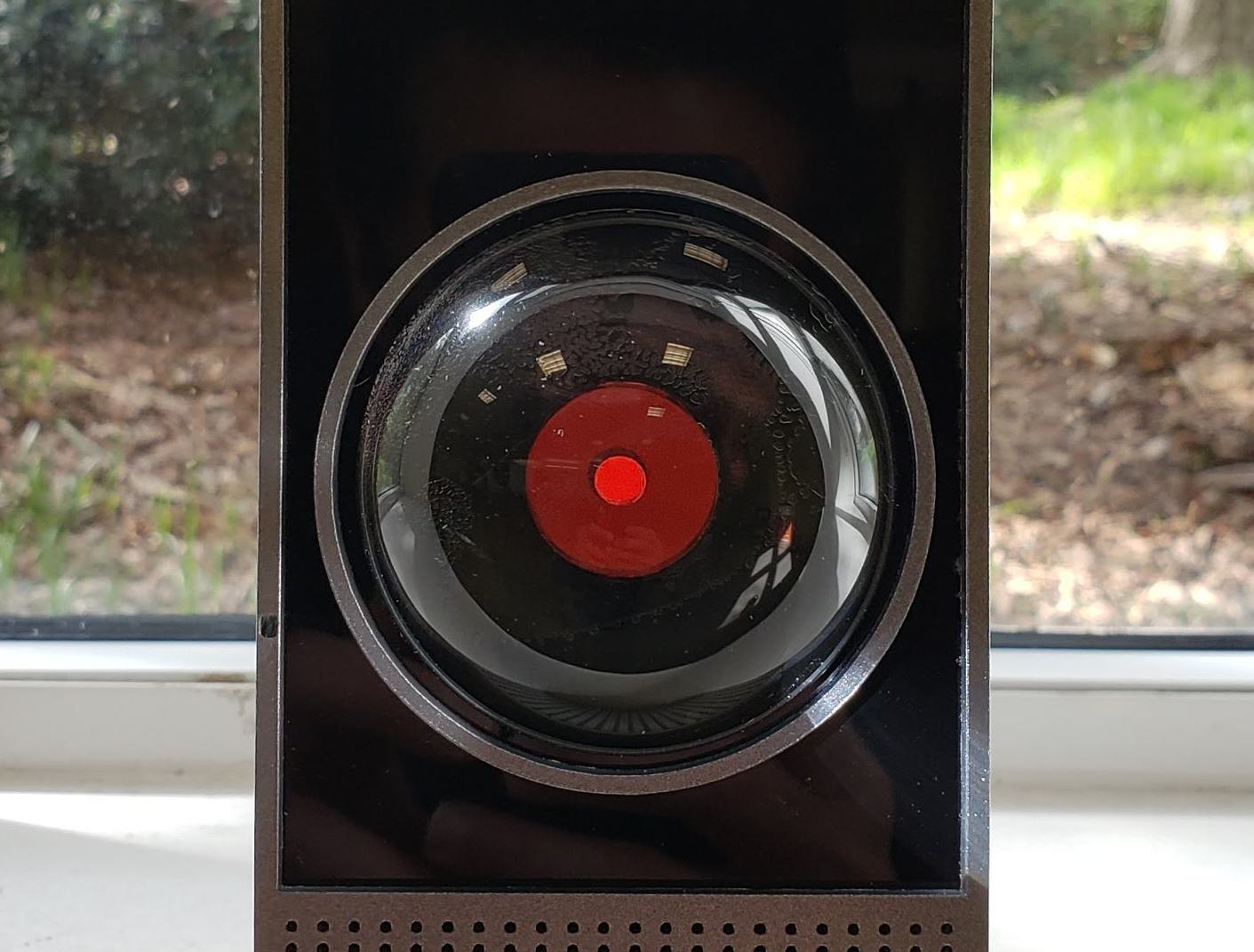HAL 9000

I recently learned about using acrylic to make clean looking builds. So when there was an issue with a HAL replica kit being received in time for the exhibit, it was time to turn to making one from scratch and acrylic quickly came to mind. Since I wanted to limit power runs on the exhibit wall, I decided to use fluorescent acrylic that does a great job of capturing ambient light and directing it to its edges. I owe a lot of thanks to the Tap Plastics store in Fremont, CA, where they were gracious with their time to work through design ideas with me.
In my build, the pupil of HAL's eye is the edge of a stacked set of red acrylic pieces. I then added dark smoke acrylic to make the corneal shape, cut to the right size to accommodate the magnifying effect of the cabochon. Overall, I took a lot of liberties with this design. For one, the side profile of the cabochon isn't the same shape as the original's fish-eye lens. But optically, I think it looks pretty good. Also, there isn't a chance for any flare from the aperture blades of a real lens but I can live with that.
 HAL 9000. Side view
HAL 9000. Side view
Meltdown
Cementing acrylic is not easy. Next time I’ll use one with a slower setting time.
 HAL 9000. Problems during the cementing process
HAL 9000. Problems during the cementing process
Speaker grill
I was running a bit short on time and so I opted to combine the speaker grill with the frame rather than making it recessed. Once I spray-painted it, it didn’t look too bad.
 HAL 9000. Laser-cut speaker grill
HAL 9000. Laser-cut speaker grill
The only drawback of laser cutting the holes is that I had to punch many of the remnant small cylinders out by hand. It was oddly satisfying though, just like popping bubble wrap.
 HAL 9000. With plenty of light
HAL 9000. With plenty of light
HAL Exhibit Label
HAL 9000 1968
2001: A Space Odyssey
HAL 9000 model by Edwardo Martinez
Acrylic, cabochon
A computer known as HAL is one of the crew members aboard a mission to Jupiter. HAL is considered to be “foolproof and incapable of error” and so when HAL appears to be wrong about predicted failures in equipment, two of the ship’s human crew members discuss a plan to disconnect HAL. But unbeknownst to them, HAL is capable of lip-reading and takes preventive actions. This representative version uses fluorescent red acrylic to capture ambient light and direct it to the observer.